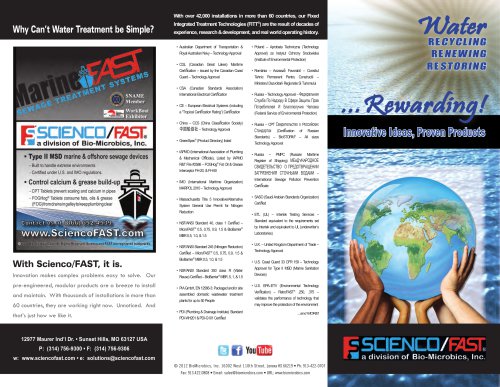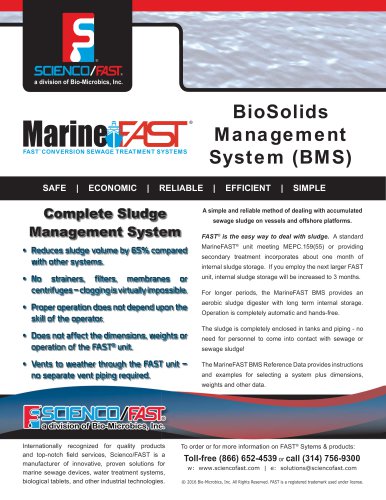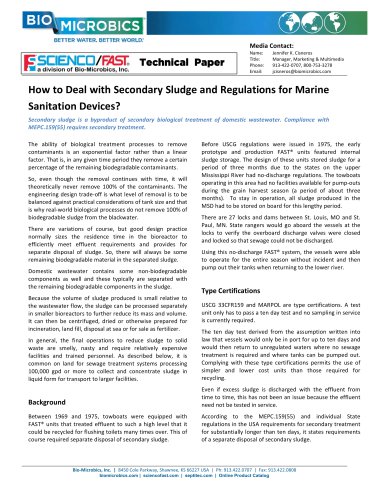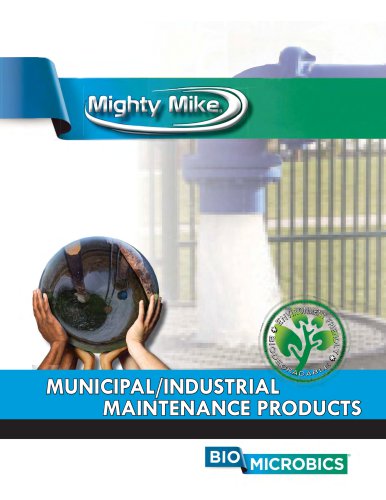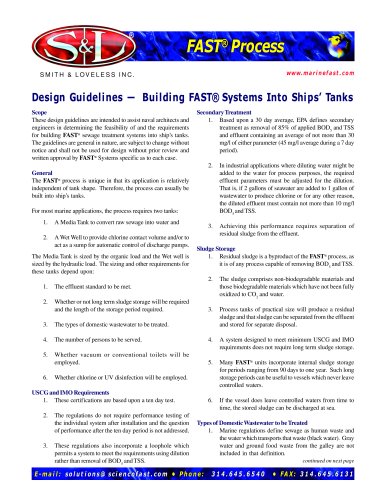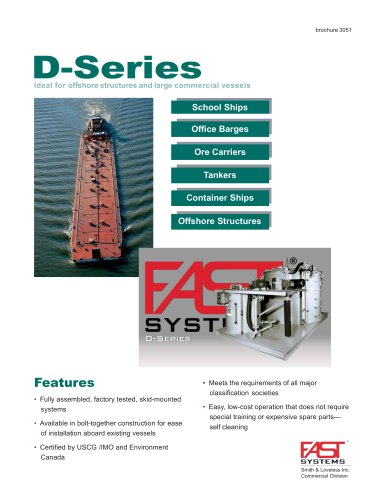
Catalog excerpts
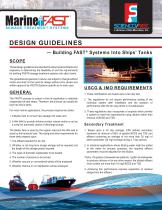
SEWAGE TREATMENT SYSTEMS DESIGN GUIDELINES — Building FAST® Systems Into Ships’ Tanks SCOPE These design guidelines are intended to assist naval architects and engineers in determining the feasibility of and the requirements for building FAST® sewage treatment systems into ship’s tanks. The guidelines are general in nature, are subject to change without notice and shall not be used for design without prior review and written approval by FAST® Systems specific as to each case. USCG & IMO REQUIREMENTS 1. These certifications are based upon a ten day test. The FAST® process is unique in that its application is relatively independent of tank shape. Therefore, the process can usually be built into ship’s tanks. 2. The regulations do not require performance testing of the individual system after installation and the question of performance after the ten day period is not addressed. For most marine applications, the process requires two tanks: 1. A Media Tank to convert raw sewage into water and 3. These regulations also incorporate a loophole which permits a system to meet the requirements using dilution rather than removal of BOD5 and TSS. 2. A Wet Well to provide chlorine contact volume and/or to act as a sump for automatic control of discharge pumps. Secondary Treatment The Media Tank is sized by the organic load and the Wet well is sized by the hydraulic load. The sizing and other requirements for these tanks depend upon: 1. Based upon a 30 day average, EPA defines secondary treatment as removal of 85% of applied BOD5 and TSS and effluent containing an average of not more than 30 mg/l of either parameter (45 mg/l average during a 7 day period). 1. The effluent standard to be met. 2. Whether or not long term sludge storage will be required and the length of the storage period required. 3. The types of domestic wastewater to be treated. 4. The number of persons to be served. 5. Whether vacuum or conventional toilets will be employed. 6. Whether chlorine or UV disinfection will be employed. 2. In industrial applications where diluting water might be added to the water for process purposes, the required effluent parameters must be adjusted for the dilution. That is, if 2 gallons of seawater are added to 1 gallon of wastewater to produce chlorine or for any other reason, the diluted effluent must contain not more than 10 mg/l BOD5 and TSS. 3. Achieving this performance requires separation of residual
Open the catalog to page 1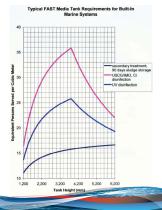
Typical FAST Media Tank Requirements for Built-In Marine Systems
Open the catalog to page 2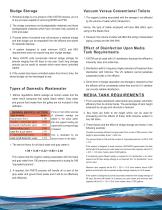
SEWAGE SERVICE FACTORS Type of waste factor (+) ground food waste 1.06 total of all domestic waste 3.54 Sludge Storage 1. Residual sludge is a by-product of the FAST® process, as it is of any process capable of removing BOD5 and TSS. 2. The sludge comprises non-biodegradable materials and those biodegradable materials which have not been fully oxidized to CO2 and water. 3. Process tanks of practical size will produce a residual sludge and that sludge can be separated from the effluent and stored for separate disposal. 4. A system designed to meet minimum USCG and IMO requirements...
Open the catalog to page 3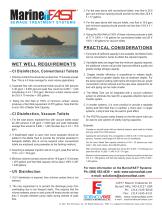
3. For the case above with conventional toilets, max flow is 25.6 gpm and minimum spacing should provide not less than 25.6 X 3 = 77 gallons. SEWAGE TREATMENT SYSTEMS 4. For the case above with vacuum toilets, max flow is 19.8 gpm and minimum spacing should provide not less than 19.8 X 3 = 59 gallons. 5. Sizing the Wet Well at 150% of these volumes produces a tank of 77 X 150% = 116 gallons for conventional toilets and 59 X 150% = 89 gallons for vacuum toilets. PRACTICAL CONSIDERATIONS 1. If one tank of sufficient capacity is not available, two Media Tanks can be connected in series to obtain...
Open the catalog to page 4All Scienco/FAST catalogs and brochures
-
Water Treatment Solutions
6 Pages
-
DV-Series Reference
2 Pages
-
MarineFAST® Brochure
6 Pages
-
FAST Conversions
4 Pages
-
D-Series sewage treatment
8 Pages
-
LX-Series sewage treatment
4 Pages




